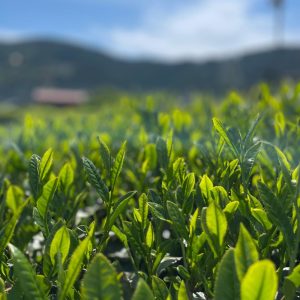
The name of this cultivar comes from the last name of its breeder, Inaguchi (稲口).
It’s a normal budding cultivar meant for sencha production.
History of Inaguchi
In present day Shizuoka city, Mr. Inaguchi discovered this tea plant by accident in his tea field.
It was the result of a natural crossing of Yabukita plants.
Since it had a deep green color and seemed to grow well, Mr. Inaguchi decided to propagate it.
Later on, in 1986, the Shizuoka prefecture tea industry experimental site determined that the cultivar had a good color, shape and aroma.
It was registered in 1988 under the seed and seedling law.
Characteristics of Inaguchi
Mature leaves of Inaguchi are slightly big and have a long oval shape.
They also have a deep green color with much luster.
Young leaves have the same shape and color as the older ones, but they are medium in size.
In addition, the leaves are slightly thick and soft.
This cultivar is resistant to cold weather.
It’s also fairly strong against anthracnose and the grey blight, but very weak against the bacterial shoot blight.
Inaguchi can be picked one or two days later than Yabukita, and it has a similar yield at harvest.
As a sencha, the leaves can be rolled tightly, and have a desirable deep green color.
Once brewed, it has a yellow green color, a sweet taste with umami and a subtle astringency.
The aroma is sweet, fresh and a little floral.




